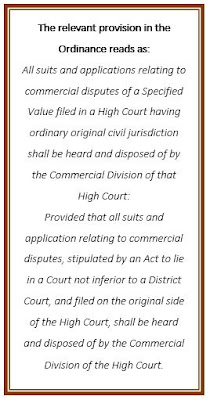Same trade channel for allied / cognate goods bound to create confusion
In a recent decision rendered by the Calcutta
High Court in the case of Assam
Roofing Ltd. & Anr. vs. JSB Cement LLP & Anr., G.A.
No.1412 of 2015, C.S. No.106 of 2015, the
Court made an in-depth analysis of use of deceptively similar marks and use of
cognate/ allied goods falling in the same class. The case is an interesting one
as it ruled on the aspect of infringement in cases where two similar marks were
being used with respect to cognate goods falling in the same class.
Brief Facts
Assam Roofing Ltd. (hereinafter referred to as
“the Plaintiff”) filed the instant suit seeking relief of injunction against JSB Cement LLP & Anr. (hereinafter
referred to as “the Defendant”) on account of infringement and passing off of its trade mark “RHINO”.
The Plaintiff, established in 1972, is engaged in the business of
manufacturing galvanized iron sheets, asbestos, cement sheet and roofing accessories.
Contentions raised by the Plaintiffs
- The Plaintiffs started their asbestos unit in 1977 and sale of asbestos sheets under the mark “RHINO” in colour scheme of red, black and white which was adopted in 1998, and by virtue of continuous and extensive use of the mark since then, the same has become a well-known trade mark and has acquired secondary significance.
- That sale of products under the mark “RHINO” is around INR 3.95 Billion (Approx. USD 59.17 Million*) per annum and it has spent large amounts on advertisements and publicity of its mark.
- The colour scheme and pictorial presentation of the mark “RHINO” are identifiable with the Plaintiffs and their products only.
- The Plaintiff No. 1 has obtained registration over the mark “RHINO”, “RHINO” labels and the device of “RHINO” in Classes 6 and 19, the first of such registration dating back to October, 10, 1977.
- Use of the mark “RHINO” in cognate and/ or allied goods would indicate their source of origin from the Plaintiffs only, as the general public associates their products with the Plaintiffs due to long and continuous use of the same by them.
- Plaintiffs’ grievance- The Plaintiffs in 2015, discovered that the Defendants had recently started marketing and selling cement under the impugned mark “RHINO”.
- Such use by the Defendants was dishonest as they were not only using the identical mark “RHINO”, but also the device of the Rhino in the same colour scheme.
- The goods of the Plaintiffs i.e. asbestos sheets and Defendants i.e. cement were cognate and/ or allied goods and were sold through the same trade channels.
- Such act of the Defendants in using the identical mark “RHINO”, the device of the Rhino that too in an identical colour scheme in relation to cognate goods in Class 19 violated the Plaintiff No. 1’s statutory rights under the Trade Marks Act, 1999 and the Copyright Act, 1957 and also constituted the tort of passing off.
- The Defendants were aware of the reputation and goodwill earned by the Plaintiffs in their business and hence dishonestly adopted the same trade name “RHINO” with the same colour scheme and device of Rhino with the ulterior motive to deceive the general public.
Contentions raised by the Defendants
- The Defendants had adopted the trade mark “RHINO” after making diligent searches at the Trade Marks Registry and thereafter commenced use of the said mark on January 1, 2015.
- No one could claim any right over the word mark “RHINO” as it was synonymous with the north-east and was a commonly used trade mark in the perspective of business environment in the north-east.
- The Plaintiffs had not ventured into the business of cements and hence could not claim monopoly on a class of goods for which no intention to use was shown.
- Cement goods and asbestos fibres could not be called as cognate goods, and as these were different goods, the allegation of passing off does not hold ground.
- The Plaintiffs did not hold any registration for the mark “RHINO” for cement, and since Asbestos Sheets and Cement are goods of totally different descriptions, there cannot be any infringement of the trade mark “RHINO” by the Defendants for cement goods.
- That the colour combination of red, black and white could not be the exclusive property of Plaintiffs, since there were a number of persons having the trade mark for different goods in Class 19 with similar colour combination of red, black and white. Hence, the Plaintiffs cannot have any exclusivity on colour or combination.
Order and Observation of the Court
The Calcutta High Court in this case ruled on several points and referred to a plethora of judgments for substantiating its observation in the case. In view of Plaintiffs’ first use of the mark in the market and other factors discussed below, the Court granted injunction to the Plaintiffs and restrained the Defendants from using the mark “RHINO” for cement goods. The observations of the Court are discussed in brief below:
- On use of deceptively similar mark
- On use of cognate/ allied goods falling in similar class
Concluding
Remarks
In the
instant case, it cannot be denied that the Plaintiffs were using the impugned
mark since 1977, whereas the Defendants started using a similar mark with
respect to alleged allied goods in 2015. In such case of long and extensive use
by the Plaintiffs, the Plaintiffs’ goodwill and reputation earned in the mark
could not be overlooked. Moreover, use of an established mark in respect of
cognate goods i.e. asbestos and cement which were being sold through the same
trade channel further aggravated the possibility of confusion in the case,
thereby impending the grant of injunction.
*@ 1 USD = 66.76 INR
|






